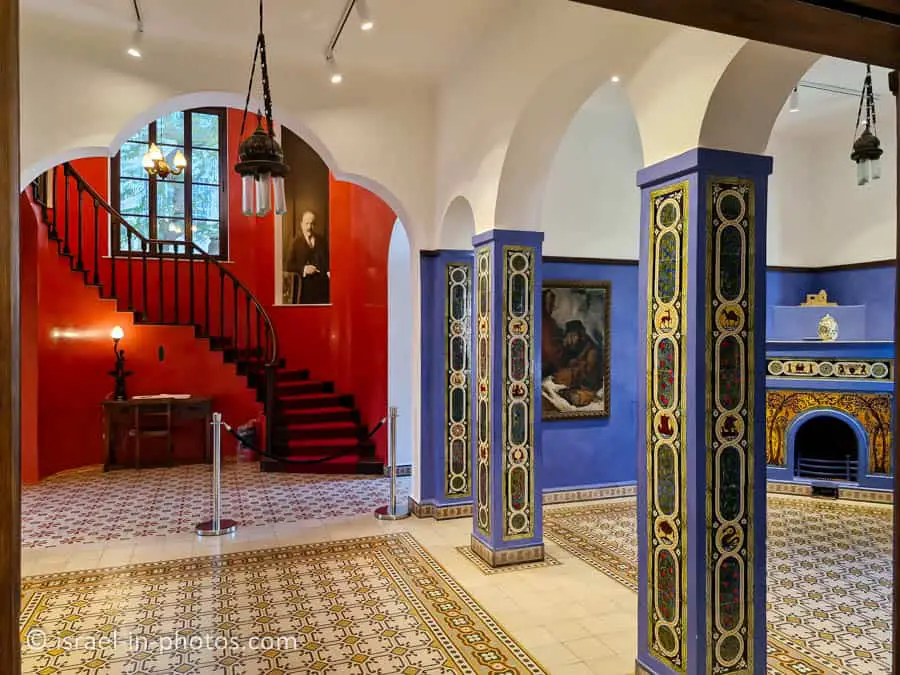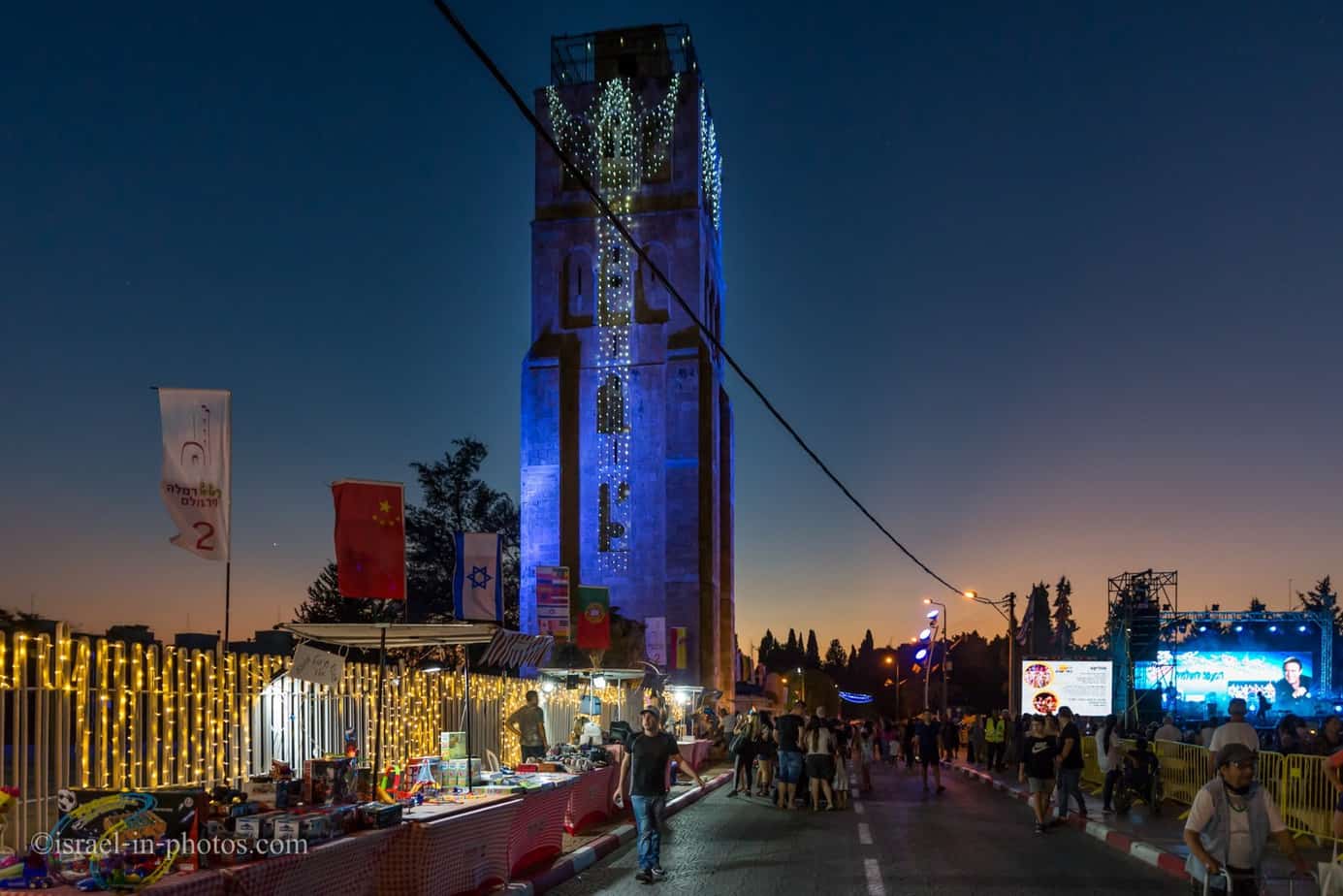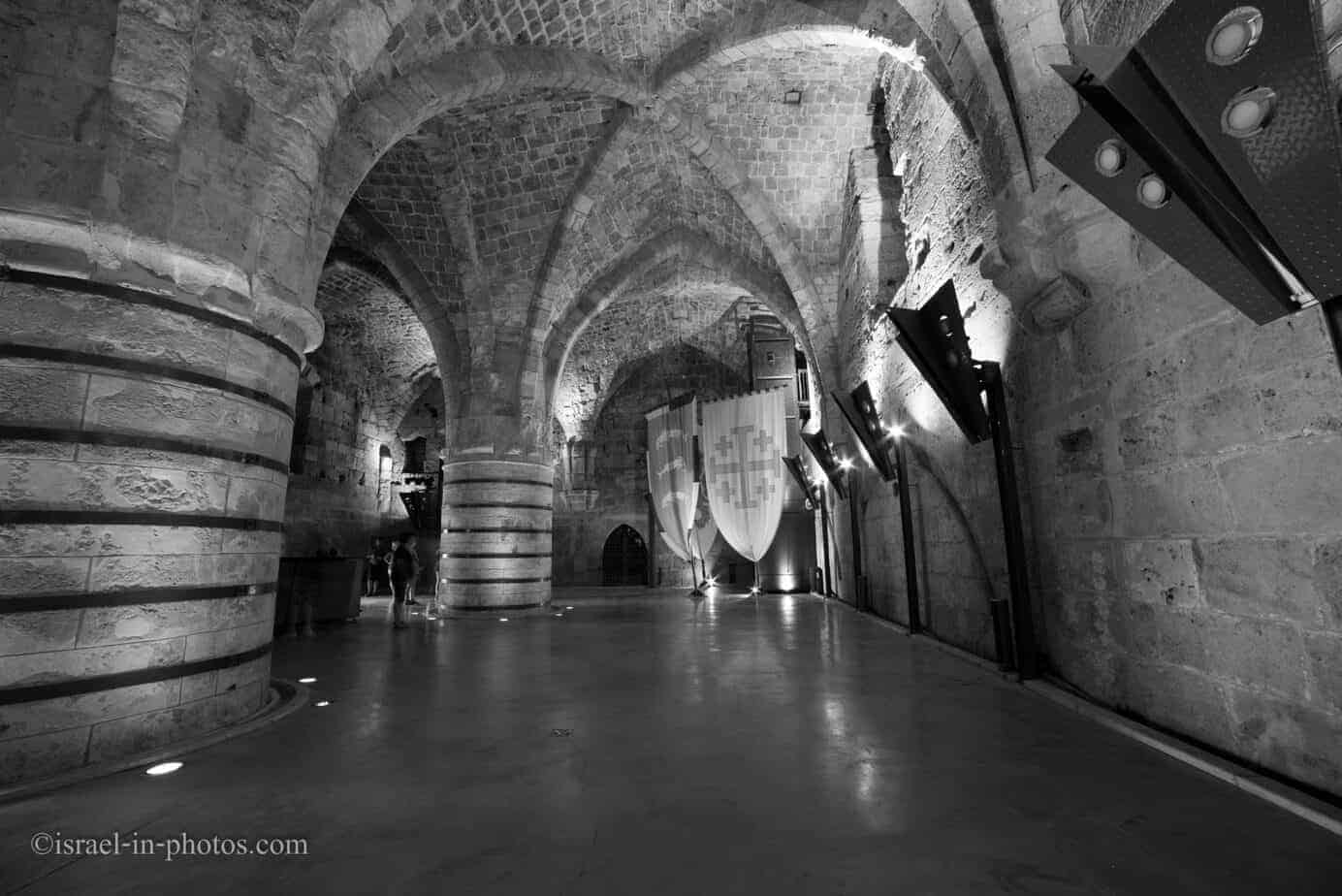Bialik House, Tel Aviv – Visitors Guide
Bialik House was the residence of Israel’s national poet and now serves as a museum, archive, and cultural center.
Table of Contents
Map
Bialik House is located at 22 Bialik Street, Tel Aviv.
Directions for drivers: Link to Waze and Link to Google Maps
Directions for public transport: Link to Moovit
Interactive map of the area:
Note: Finding parking in this area is challenging. Many paid parking lots can be full, and you can expect to pay 20-30 NIS per hour for parking. If you can, use public transport. Allenby Light Rail Station is not far away (1.3 km) if you do not mind a short walk.
Bialik House is located near additional attractions like Beit Ha’ir and Rubin Museum.

Opening Hours
Sunday – Closed
Monday – Wednesday: 09:00 – 17:00
Thursday: 09:00 – 19:00
Friday, Saturday, and Holidays: 10:00 – 14:00

Entrance Fee
Adult: 35 NIS
Family (parents + 2 children): 85 NIS
Student: 30 NIS
Child (6-18): 20 NIS
Child (under 6 years old): free
Note: The entrance fee and opening hours were updated in March 2025. In any case, recheck the official site before your visit.
Inside Bialik House
Here are several photos from the street:



The home of the national poet, Haim Nachman Bialik (1873-1934), was designed by architect Joseph Minor in 1925 as a residential building in the Eclectic Style. It is under the tight restrictions of the 2650B conservation plan and is located in the heart of the White City, declared a World Cultural Heritage Site by UNESCO in 2003. Haim Nachman Bialik, his wife Manya, and her parents lived in the building until 1933. During those years, the house served as a center of Hebrew culture. Here Bialik promoted the Oneg Shabbat project, the founding of Habima Theater, the Israel Opera, and many other enterprises.
After the poet’s death, his widow, Manya, transferred the building to the Tel Aviv municipality so that it would serve as a home for his literary legacy. At the request of the poet, the house was designed as “a house with European arrangements and amenities inside – within external forms of the Ancient East”.
The characteristics of the architectural culture in the East are expressed in the dome of the stairwell, the prominent wooden Arker of the library, and the use of pointed Islamic arches. Internally, ceramic tiles are decorated with symbols of the tribes of Israel and biblical motifs, designed at Bezalel according to the paintings of Zeev Raban.
Landscape architect Yechiel Segal planned the garden according to Bialik’s vision as the Garden of the Seven Species. As part of the conservation work, the archive and Bialik’s study room, located in the basement, were restored.
Research and planning of the garden: Or. Ada Vittorina Segre_ Architecture and Conservation: Nitza Szmuk Architects 2023.
Source: sign
Upon entering the building, we purchased tickets and began exploring the first floor. Our visit started in the central guest room and the living room.











As you can see from the photos, there are many signs telling about different aspects of his life.
We climbed the stairs from the first floor to explore the remaining rooms on the second level.















Here are several photos of the building from the outside:


There are numerous attractions in this area, which can be found on the interactive map at the top. But since this was not the first place we visited that day, we wanted to get something to eat. Hence, we headed to the nearby Stefan Austrian bakery for Viennese Strudel.

How much time does a visit to the museum take?
This is a small museum, and we spent about 40 minutes there. A typical visit will probably be 30 – 60 minutes.
About the Museum
Beit Bialik – the home of the national poet Haim Nachman Bialik – is one of the five houses that make up Bialik Square for Hebrew and Israeli Culture.The Museum underwent renovation by the Municipality of Tel Aviv-Jaffa in 2023 to honor the centennial of the house’s establishment and located in a part of the city declared by UNESCO as a world cultural heritage site.
The house was designed by the architect Yosef Minor and built upon the arrival of Haim Nachman Bialik in Israel in 1924, with the poet’s full involvement in the planning and design of the house. The castle-like structure is considered to be one of the central houses in Tel-Aviv culturally and historically and the Jewish settlement in the country. The house was partly opened to the public, inviting it to come and meet the poet and enjoy his art collection. Some of them met him by chance, as he was tending the garden he loved so much.
After the poet’s death in 1934, the house was opened to the public only once a year, on the anniversary of his passing. In 1937, Mania Bialik, the poet’s widow, transferred ownership of the house to the Tel Aviv municipality. The house was used as a residence for the ‘Beit Bialik Association’ with the participation of representatives of the municipality and the Association of Writers in order to become a cultural center open to the public. As such, the house became a museum in memory of Bialik, an archive and a reference library for students, with the collection of 3500 books in its library made available to the public. The first manager chosen to run the house was the writer Moshe Helles, who was a close friend of Bialik since the days of Chisinau and Odessa. In 1939, Moshe Ungerfeld was appointed director of the library and archive.
During the 1980s, Yonatan Duboserski was appointed director of the house and served in that role for the next fifteen years. As part of his tenure, the Bialik House changed its face. At the time, the house underwent a significant renovation that emphasized the national concept that the museum promoted. Those aspects of Bialik’s life were emphasized, as opposed to his private life. Therefore, the bedroom, the bathrooms, and the kitchen were changed to display spaces and offices, the house was painted in bright colors, and its facade was splashed with a grayish splash.
In 2000, under the tenure of Mayor Ron Huldai, the artist Ayelet Bitan-Shalonsky was appointed as chief curator and manager of Bialik Square. During these years, the museum underwent restoration and reconstruction work with the purpose of returning it to its former glory and original appearance while remaining faithful to Bialik’s personal choices. The restoration work and the design of the new display were led by conservation architect Prof. Nitza Metzger-Smock, and the content of the display was written by Shmuel Avneri, head of the Beit Bialik Archives. In the process, the bright original colors of the house’s walls – blue, green, and red – were revealed, which had been covered until then with their unique decorations. In addition, the original furniture of the Bialik’s and the works of art they acquired in their lifetime were restored, the space of the archive was doubled, and advanced systems were installed to preserve the valuable documents: rare manuscripts, fragments of poems, stories, articles, speeches, certificates, and more. The new permanent display integrated with the unique style of the house and illuminated the portrait of the national poet in all the richness of his creative circles and cultural and social works.
The extraordinary crossroad between East and West, not only providing a glance into Bialik’s spirit, but also into the special aesthetic of the beginning of the 20th century in the Land of Israel: an eclectic construction with oriental and European decorations: arches, a tower, a dome, a fireplace, painted floors and more – which gave tangible expression to the poet’s cultural perception.
Ever since the museum is promoting exposure and access to the many works of the poet: leader and spiritual guide, commentator and researcher, convener of Jewish Culture, essayist and speaker, editor, translator, publisher and reviver of the Hebrew language.
Nowadays Bialik House is a museum, archive and cultural center, which holds activities and events for the general public. Recently, the archive of the house was opened and you can get a personal impression of the poet’s writings.
Source: official website
Summary
Bialik House is a lovely museum, and we enjoyed our visit. But since it is small, I suggest combining it with other nearby attractions. You can find them on the map above or check out Tel Aviv.
Have you been to the Bialik House? If so, please share your experience in the comments below.
That’s all for today, and I’ll see you on future travels!
Stay Tuned!
Additional Resources
Here are several resources that I created to help travelers:- Trip Planner with Attractions and Itineraries is the page that will help you create your perfect travel route.
- What is the Best Time to visit Israel? To answer this question, we will consider the weather, prices, holidays, festivals, and more.
- Information and Tips for Tourists to Israel will answer the most common questions tourists have about Israel (including safety, passports, weather, currency, tipping, electricity, and much more).
- Israel National Parks and Nature Reserves include a complete list, top ten, map, tickets (Israel Pass, Matmon, combo), and campsites.
- If you are looking for things to do, here are the pages for Jerusalem, Tel Aviv, Haifa, Sea Of Galilee, Akko (Acre), Eilat, Nazareth, Safed (Tzfat), and Makhtesh Ramon.







